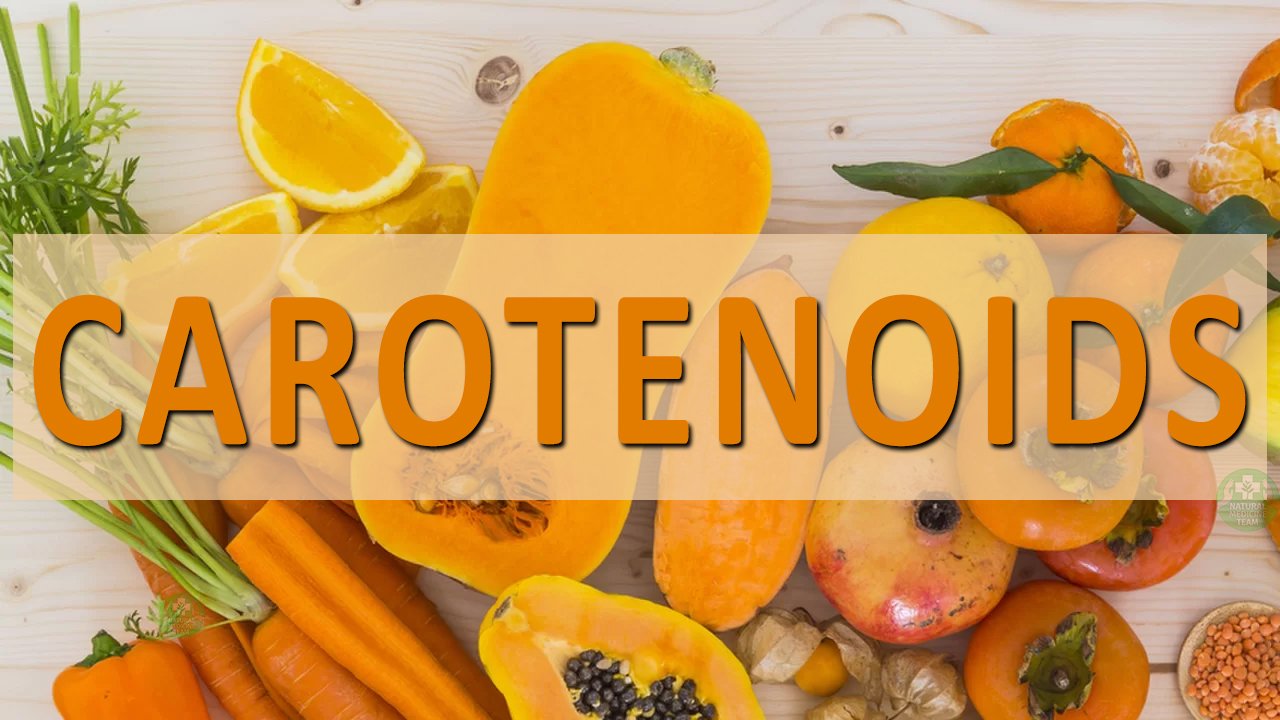Hundreds of substances act as antioxidants, but they are not one and the same. To get the most benefit, you’ ll need to consume many kinds of antioxidants for optimal health because each type has its own unique biological and chemical behaviors.

7 Types of Antioxidants & Top Food Sources
-
Carotenoids
Carotenoids are plant pigments that give many fruits and vegetables their vibrant orange, red, and yellow hues.
These are most commonly found in the Western diet:
Beta-carotene – Carrots, mangoes, pumpkin, cantaloupe, papaya, and sweet potatoes are foods rich with beta-carotene which helps maintain healthy skin and eyes.
Alpha-carotene – Alpha-carotene is found in many of the same foods as beta-carotene and also in tangerines, tomatoes, winter squash, and peas.
Lycopene – This powerful antioxidant can help reduce the risk of prostate cancer, stroke, osteoporosis, and lung cancer. Foods rich in lycopene are tomato, watermelon, grapefruit, red bell pepper, red cabbage, and guava.
Lutein – It is among the most effective carotenoids to reduce the risk of developing age-related macular degeneration or the loss of central vision. It is found in collard greens, spinach, kale, broccoli, green beans, and Brussels sprouts.
-
Flavonoids
This is the largest class of phytonutrients. Flavonoids have an anti-inflammatory, anti-diabetic, anti-cancer, and neuroprotective effect, including the capacity to scavenge free radicals.
These are the most common flavonoids:
Anthocyanins – Berries, grapes, plums, cherries, red cabbage, eggplant, and black currants are the foods rich anthocyanins.
Flavonols – Mostly found in apples, kale, broccoli, berries, onions, and black and green teas. Consuming more flavonols has been associates to improves mental and physical performance.
Flavanols – Found most abundantly in white, green, and oolong tea, as well as cocoa. They are linked to reduced body fat in men, and eating chocolate gives the brain a boost.
Isoflavones – A great source of estrogen that produces hormonal activity in the body. Foods rich with isoflavones are soybeans, soy foods, and legumes.
Flavones – Present in foods such as parsley, hot peppers, celery, and thyme. They have shown anti-tumor, anti-microbial, and anti-inflammatory activities.
-
Vitamins
Vitamin A – It can be found in many fruits and vegetables because of beta-carotene functions as provitamin A. Another form of vitamin A is retinol, which can be found in animal-based foods. This vitamin is important for healthy skin and bones, and immune function.
Vitamin C – Not only scavenges free radicals, it also helps restore the antioxidant properties of vitamin E. Present in citrus fruits, cantaloupes, kiwis, mangos, berries, bell peppers, broccoli, and spinach.
Vitamin E – It helps to slow the aging process within cells in the body. Present in plant seeds, vegetable oils, avocado, asparagus, and Swiss chard.
Isothiocyanates
Found in cruciferous vegetables such as broccoli, cabbage, cauliflower, arugula, radish, wasabi, daikon, and mustards. Isothiocyanates are sulfur-rich compounds which are toxic to humans at exceedingly high doses. However, they have shown health benefits and antioxidant properties.
Resveratrol
Present in red wine, cocoa, peanuts, cranberries, blueberries, and the skin grapes. Resveratrol has been shown to be a potential preventive and treatment for cancer, cardiovascular disease, and neurodegenerative diseases in animal studies.
Tannins
Found in the bark of hardwood trees, berries, nuts, legumes, cocoa, and in drinks such as coffee, tea, beer, and wine. Eating foods that contain tannins is perfectly safe. They cleanse the body of heavy metals, reduce the risk of death due to burn injuries and protect against tumors.
Coenzyme Q10
Crucial for the healthy functioning of our cells and often deficient in people who suffer from heart conditions, diabetes, cancer, and Parkinson’s disease. Present in meat, poultry, fish, soybeans, nuts, and canola oil.
Final Thoughts: Eating food naturally enriched with antioxidants is important for your overall health. Colorful fruits and vegetables will keep your body healthy and they are vital for the prevention of many diseases. Eat a rainbow of fruits and vegetables!
